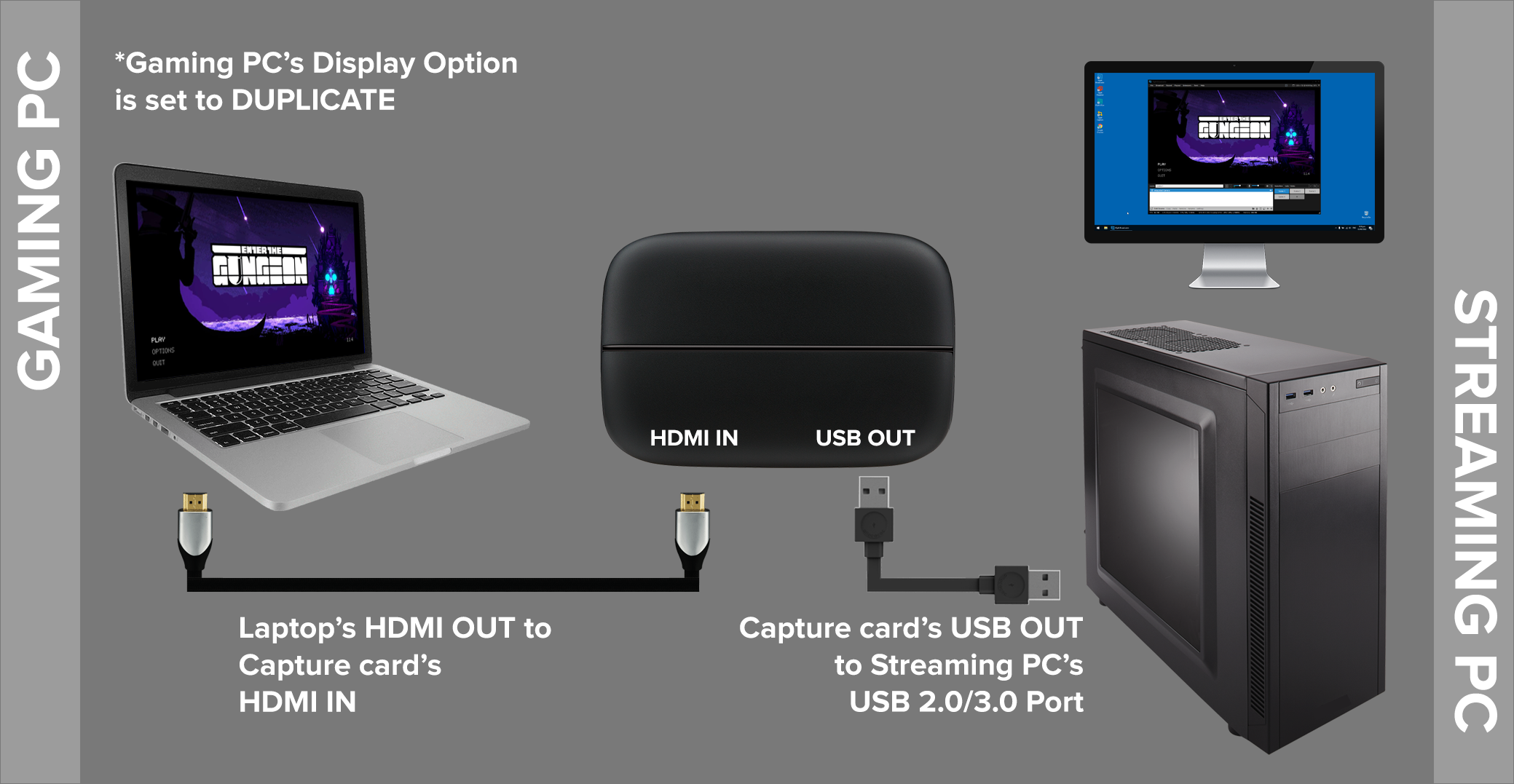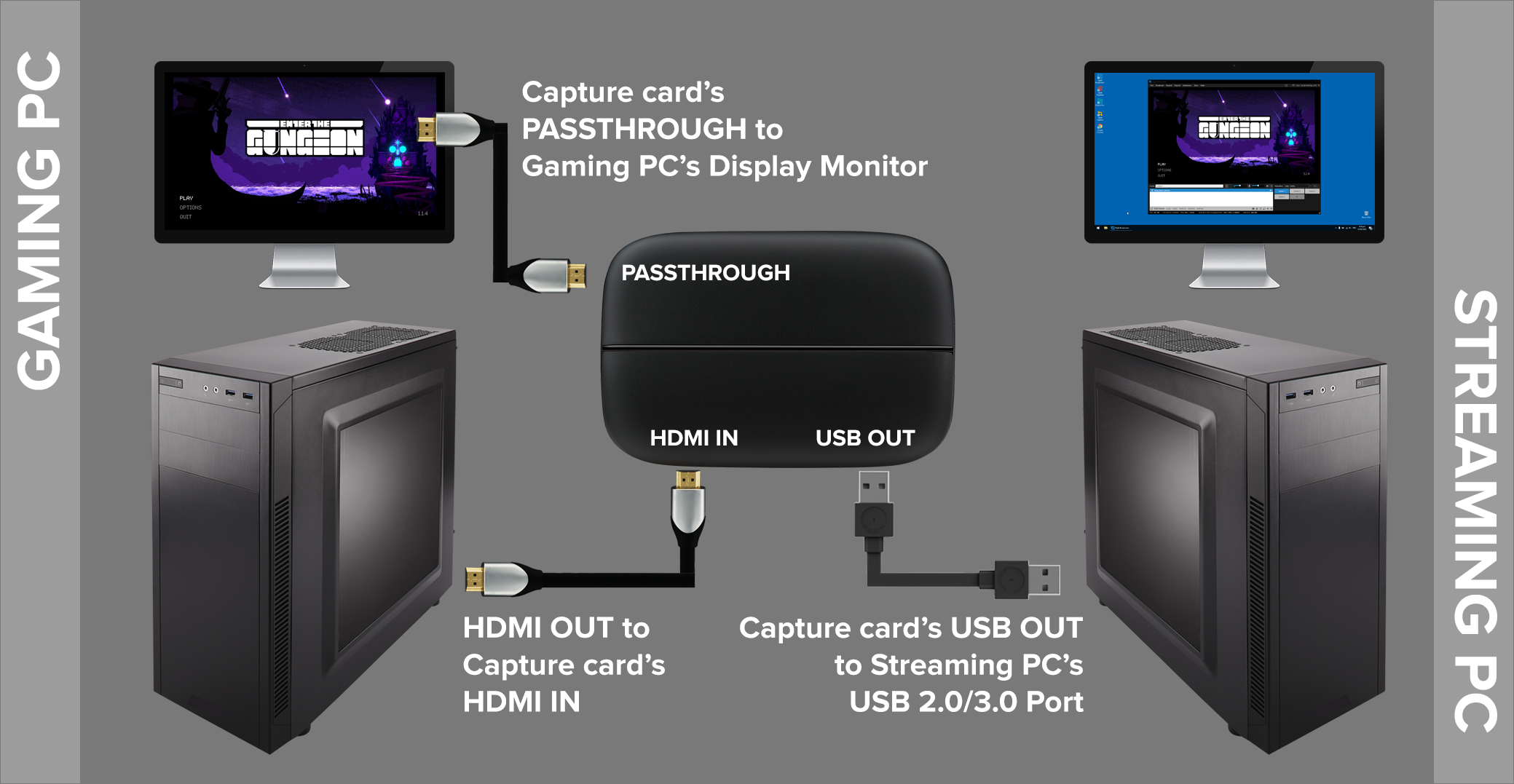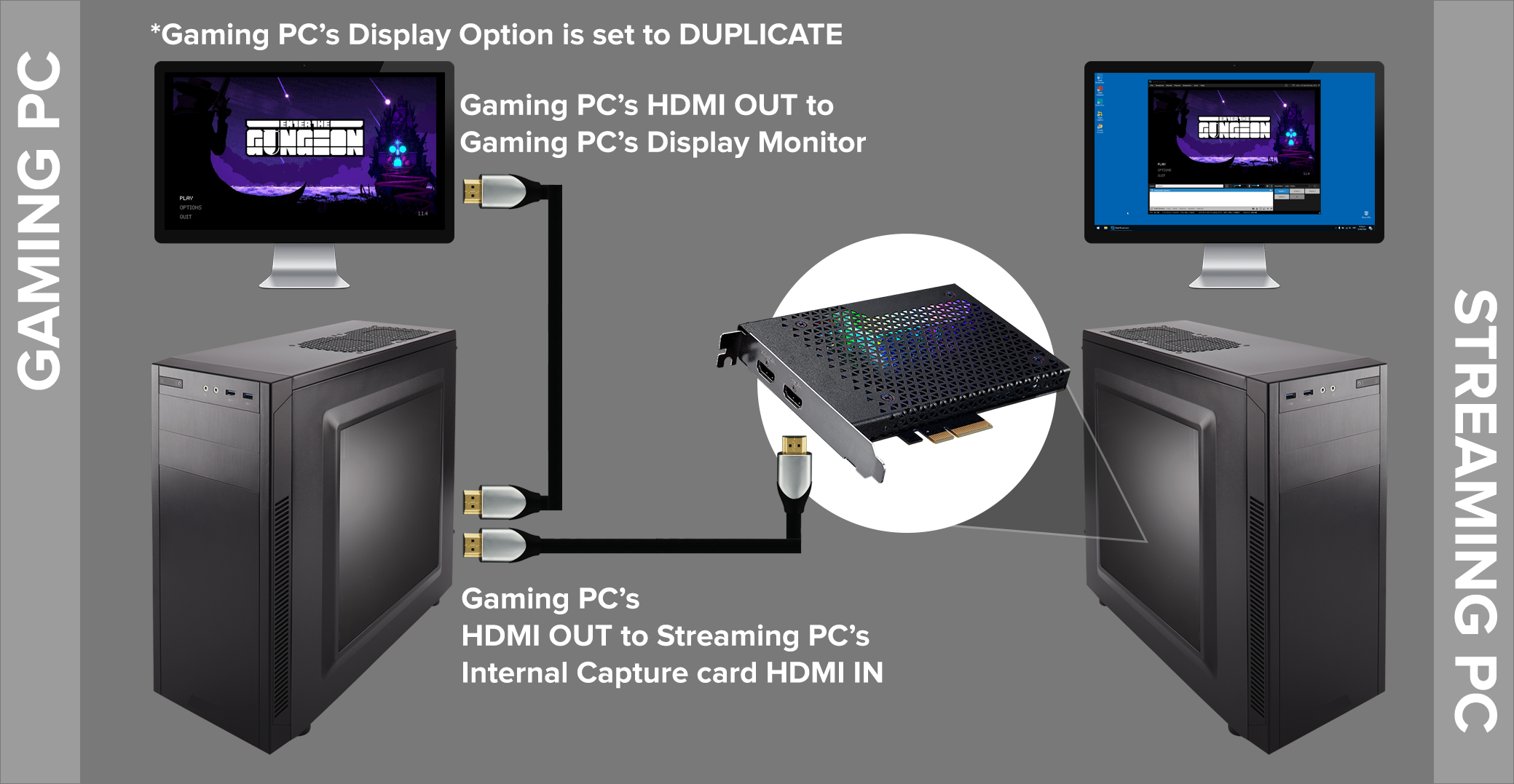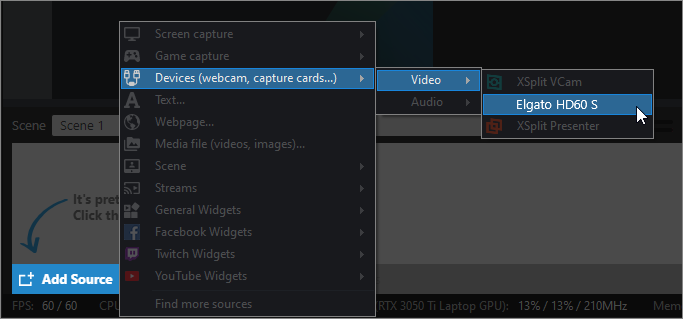Dual PC Setup with XSplit Broadcaster
Modern PC games and streaming apps like XSplit Broadcaster requires the use of your system resources to function. In some cases, running both streaming and gaming processes on a single computer may impact your stream or game's overall quality, resulting in frame drops, lags, artifacts, and more.
A popular solution that many professional streamers have known for quite some time is to set up 2 separate computers: One for streaming, and the other for gaming. This allows each system to focus their CPU/GPU/Encoding processes on just one application, which improves their performance and overall quality.
- Hardware Requirements
- Software Requirements
- Connecting the Computers
- Using an External Capture Card
- Using an Internal Capture Card
- Adding the Capture Card as a Source in your Streaming PC
Hardware Requirements
- Your Gaming PC's system specifications should at least be within or above the recommended specs of the game you're playing.
- For external capture cards: Your Gaming PC's Graphics Card should have a video out port that's compatible with your capture card (e.g. HDMI out).
- Your Streaming PC is where XSplit Broadcaster will be installed.
- An external capture card, or:
- An internal capture card that's installed in your Streaming PC
Software Requirements
- Make sure both your Gaming and Streaming PCs have updated system drivers.
- Streaming PC - Download and install the latest version of XSplit Broadcaster HERE
- Streaming PC - Follow your capture card manufacturer's setup instructions and download/install any required software as needed.
- Gaming PC - Install the game you wish to stream, and download any required software/updates needed for the game to run properly.
Connecting the Computers
Using an external capture card
- Plug an HDMI cable to your Gaming PC's HDMI OUT port. Connect the other end of the same HDMI cable to your capture card's HDMI IN port.
- Connect the USB OUT of the capture card to your Streaming PC's USB 2.0/3.0 port.
- It's best for your Gaming PC to have its own dedicated screen which you will use as your primary display. Here are some methods to consider, depending on your current hardware and preferences:
METHOD 1: When using a desktop computer with a GPU that has more than one video out ports, then you can change your Gaming PC's Windows display option to Duplicate, so the same display goes out to both your Gaming PC's display monitor and your capture card. This allows you to configure the display's framerate, refresh rate, and resolution, especially when your capture card's video specifications are lower than what your Gaming PC is capable of.

METHOD 2: Laptops as Gaming PCs - It's common for laptops to have a single HDMI OUT port. Similar to Scenario 1, you will need to change your Gaming PC's Windows display option to Duplicate.

METHOD 3: Some capture cards have a Passthrough port, which acts as a VIDEO OUT. You can connect your display monitor here instead if (1) Your Gaming PC does not have enough HDMI OUT ports or (2) If using Duplicate as your Windows display option is causing issues. You will, however, be limited to your capture card's video maximum specifications when viewing your games via passthrough.

Using an internal capture card
- Plug an HDMI cable to your Gaming PC's HDMI OUT port.
- Plug the other end of the same HDMI cable to your Streaming PC's internal capture card HDMI IN port.
- Your Gaming PC needs to have its own dedicated screen which you will use as your primary display. Here are some methods to consider, depending on your current hardware and preferences:
METHOD 1: If your Gaming PC has multiple HDMI OUT ports, then all you have to do is to connect your Gaming PC's primary display to one HDMI OUT, and another to the Streaming PC's Internal capture card HDMI IN. You will need to change your Gaming PC's Windows display option to Duplicate so the same video signal gets sent out.

METHOD 2: An internal capture card device may have a PASSTHROUGH (HDMI OUT) port as well. Connect your Gaming PC's primary display to the Streaming PC's internal capture card PASSTHROUGH. This is useful for when your Gaming PC only has one HDMI OUT available.

Adding the Capture Card as a Source in your Streaming PC
- Confirm that all cable connections are correct, then turn on both computers.
- Run XSplit Broadcaster from your Streaming PC, then go to Add Source > Devices > Video > select your capture card from the video devices list.

- Your Gaming PC's display should now be shown in the XSplit Stage as a video source. You can resize this window to your liking.
Congratulations! You have now successfully setup your computers for Dual PC streaming/recording using your capture card!
Streaming/Recording your Game
In XSplit Broadcaster, go to Broadcast > Select your streaming output and start streaming! (Click here to learn more about setting up your streaming output)
If you prefer saving a video of in your local drive instead, then follow our guide here to learn how you can use XSplit Broadcaster's Local Recording feature.
Updated on: 11/08/2022
Thank you!